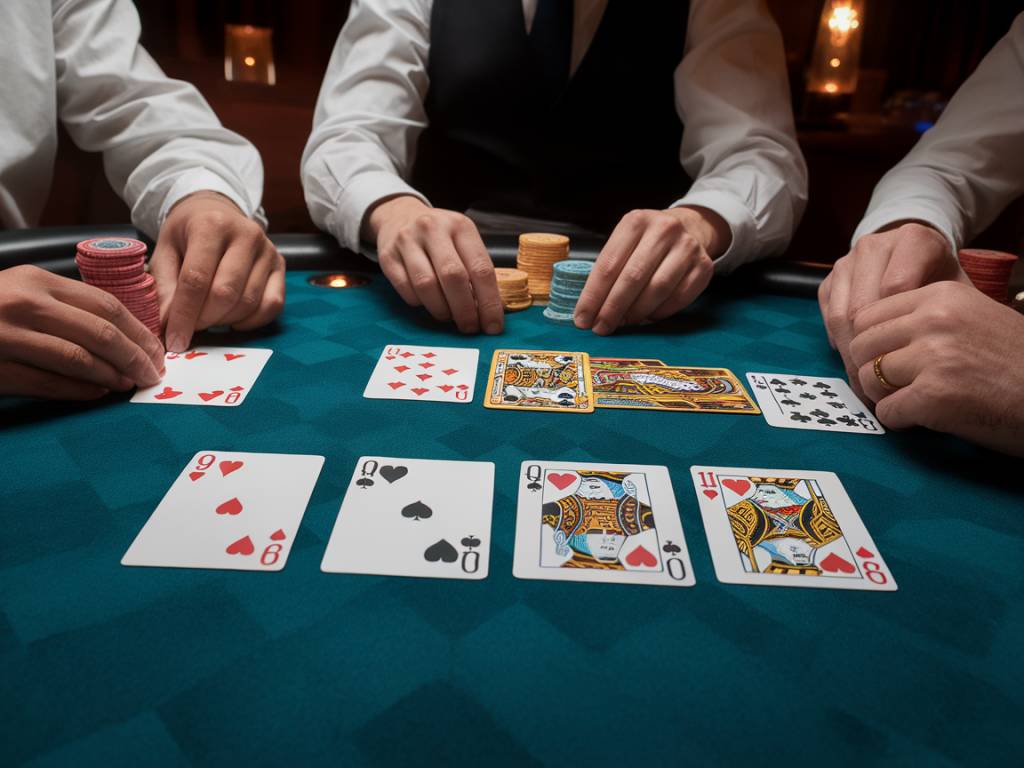Introduction to Seven Card Stud Poker 
Seven Card Stud Poker is one of the classic forms of poker that has retained its popularity over the years. Unlike Texas Hold’em, which has community cards, each player in Seven Card Stud is dealt their own individual hand, some of which are visible to other players at the table. This dynamic provides a different kind of strategy and excitement. If you’re eager to dive into the world of Seven Card Stud, let’s cover the basics, rules, and some strategies to help you succeed at the table.
Basic Rules of Seven Card Stud Poker
In Seven Card Stud Poker, each player is dealt seven cards throughout the course of the hand. Let’s break down the game step by step:
Setup and Antes
Before any cards are dealt, each player must post an ante. An ante is a small forced bet that all players must contribute to the pot to ensure there’s something to play for each hand. The amount of the ante is typically a fraction of the game’s lower betting limit.
Third Street
Each player is dealt three cards. The first two cards are dealt face down (hole cards), and the third card is dealt face up (door card). The player with the lowest face-up card must post a « bring-in » bet, which is usually half of the lower betting limit. This is not optional unless the player decides to fold. Betting then continues clockwise around the table.
Fourth Street
Each player receives another face-up card. From this point on, the player with the highest-ranking face-up cards starts the betting. The rounds follow the same structure: betting, calling, raising, or folding.
Fifth Street
The fifth street deals each player another face-up card. The betting limits typically double at this stage of the game.
Sixth Street
Another face-up card is dealt, and betting continues as before.
Seventh Street (The River)
The final card is dealt face down to each remaining player, making it a total of seven cards: four face-up and three face-down. A final round of betting happens after this deal.
Showdown and Winning the Pot
After the final round of betting, players reveal their hands. The best five-card hand wins the pot. Like in other poker variants, the standard poker hand rankings apply:
- Straight Flush
- Four of a Kind
- Full House
- Flush
- Straight
- Three of a Kind
- Two Pair
- One Pair
- High Card
Key Strategies for Seven Card Stud Poker
Starting Hand Selection
One of the critical aspects of Seven Card Stud is selecting the right starting hands. Here are some guidelines:
- Three of a Kind: If you’re dealt three of a kind in your first three cards, you’re in a great position. This is an extremely powerful hand.
- Ace-High Hands: Starting with three high cards, especially if one is an ace, provides solid potential for later rounds.
- Suited Connectors: Hands like 8-9-10 of the same suit are strong as they can potentially turn into straights or flushes.
Observation and Memory
Because many of the cards are visible in Seven Card Stud, being observant and remembering which cards have been folded by other players is crucial. This can help you determine the likelihood of completing your own hand or gauge the strength of your opponents’ hands.
Position and Aggression
Unlike Texas Hold’em, where position is determined by the dealer button, in Seven Card Stud, the position rotates based on the highest-ranking exposed cards. Being mindful of your position and using aggressive betting to push out weaker hands can be very effective.
Reading Opponents
In Seven Card Stud, you have more information to work with since you can see a significant portion of your opponents’ hands. Pay attention to their betting patterns and how they bet relative to their visible cards. This can give you insights into their overall hand strength.
Protecting Your Hand
When you have a strong hand, it’s essential to extract maximum value while minimizing risk. Betting to protect your hand from potential draws is crucial. This means betting enough to make it costly for opponents chasing draws but not so much that you drive out hands you can profit from.
Bluffing
While Seven Card Stud offers more information than other poker variants, bluffing is still an essential part of the game. Given the visible cards, savvy players can sometimes bluff by representing a stronger hand than they hold based on the outward-facing cards. However, be cautious as experienced opponents may catch onto these plays.
Common Mistakes to Avoid
- Overplaying Weak Hands: Especially in early streets, it can be tempting to chase potential hands, but doing so can lead to significant losses.
- Not Adjusting to Table Dynamics: Failing to recognize how different players behave and bet can leave you outmaneuvered.
- Ignoring Pot Odds: Always be aware of the pot odds when deciding whether to call a bet, especially on drawing hands.
Choosing the Right Table
Not all Seven Card Stud games are created equal. When selecting a table, consider the stakes and the skill levels of the players. Playing against significantly more skilled opponents can be an expensive learning experience. Starting at lower stakes allows you to hone your skills without risking too much capital.
Conclusion
Seven Card Stud Poker offers a unique blend of strategy, observation, and psychology. Understanding the rules and employing effective strategies are the first steps to mastering the game. By focusing on starting hand selection, remaining observant, and adapting to evolving game dynamics, you’ll enhance your chances of success. Whether you’re a seasoned poker player looking to diversify your skills or a newcomer eager to learn, Seven Card Stud has something to offer. So deal those cards, place your bets, and may the best hand win!








